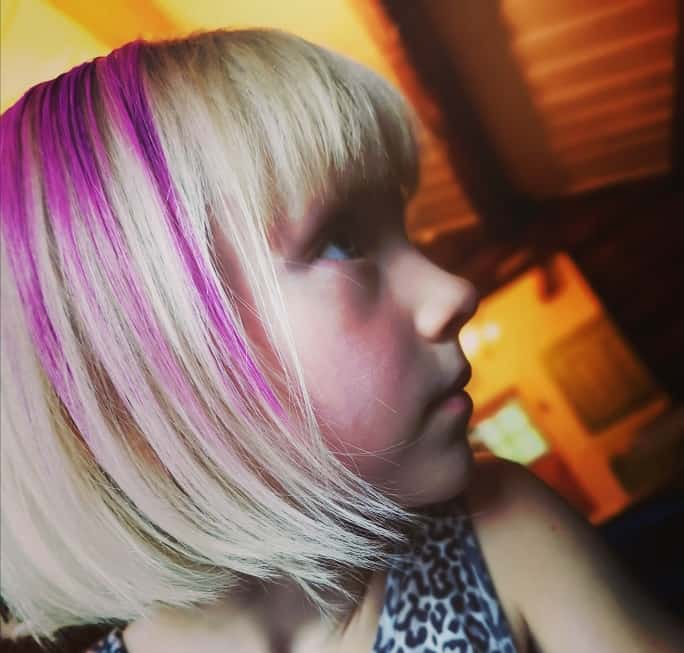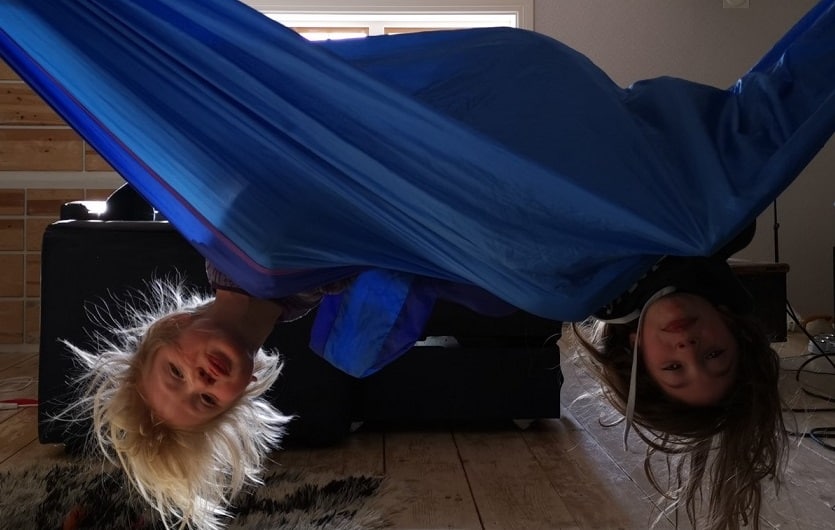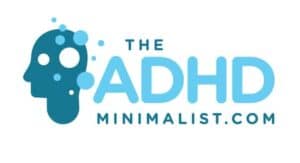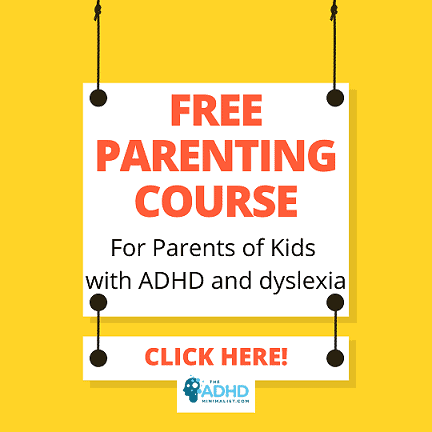
I am the mother of three kids two of which have been diagnosed with ADHD hyper and ADHD inattentive.
They were diagnosed around the age of eight and are now twelve and fifteen. These tips are what we learned over the years.
1. Many kids with ADHD have problems with sensory issues. Basic grooming can hurt or cause a sensory overload.
We found some solutions for our daughters who didn’t want to brush their hair! The first thing we did was change the type of comb we used. We bought wet brushes for both of our girls.
The videos we made will illustrate our tips in the best way possible.
ADHD and the special brushes that hurt less
2. Kids with ADHD often don’t have enough attention for brushing their hair thoroughly. Tangles start near the neck and get worse as they sleep! Cutting hair at the base of the neck reduces tangles.
I ended up scheduling an hour at the hairdresser’s to detangle my daughter’s hair. It was so bad the hairdresser had to cut her hair off! We found shaving some hair at the base of the neck kept her hair from getting out of control tangles.
ADHD and trying special haircuts that reduce tangles
3. ADHD and Painlessly removing gum from kids’ hair without ruining their hairstyle!
I find that kids with ADHD often love gum. It’s probably because it gives them something to do which helps them concentrate. Chewing gum does have its benefits, but also its drawbacks. My kids get more gum stuck in their hair than the average child!
The post below illustrates how we easily get gum out of their hair without hurting or ruining their hairstyle. This method was first shown to me by their hairdresser, and it works wonders!

4. Kids with ADHD often have trouble sleeping. The problems can vary; trouble falling asleep, waking up in the middle of the night, restless legs, night terrors, sleepwalking, anxiety or fear at bedtime, and needing to sleep in their parent’s room are a few sleep problems many parents deal with. Melatonin, weighted blankets, waking kids up when they are sleepwalking, and touch when falling asleep helped our kids.
ADHD and Sleepwalking
Our son sleepwalked often. We quickly learned to run and find him as soon as we heard his door open. He slept around 8.00 pm and between 9:00-11:00 pm he was usually sleepwalking at least once. We tried to direct him back to bed and get him under the covers without waking him, but this rarely worked. He’d just get out of bed after ten minutes.
We were forced to wake him up and then put him back to bed to get him to stay in bed and begin another deep sleep cycle.
ADHD and Fear and Anxiety at Bedtime
A few years later there was a time when he couldn’t fall asleep because of fear and anxiety. He tried to sleep in the evenings, but just couldn’t. He got up multiple times after bedtime and the only way we could get him to sleep was for my husband David to lay in our son’s bed with his hand on Lage’s back. Positive physical touch calmed his fear and anxiety, so he could fall asleep.
After Lage was asleep my husband got up and we spent the evening together. Some days we got to sleep in the same bed and some days Lage work up in the middle of the night and needed David to come and help him get back to sleep. At that point, David usually fell asleep in Lage’s bed.
ADHD and Melatonin
My kids have a prescription for Melatonin. I know in the USA we didn’t need a prescription, but after moving to Sweden we need a prescription for their melatonin. Thankfully prescriptions for kids are free in Sweden.
For some periods we just took the melatonin when they were having a bad night, and when my kids had really poor sleep we used it every evening. It’s best to take melatonin 60 to 30 min before your child’s bedtime. We haven’t noticed any negative side effects.
ADHD and Weighted Blankets
My kids use weighted blankets. We’ve tried blankets with balls in them and blankets with chains. Right now my daughter is using a blanket with chains that weigh around 7 to 9 kilos (15 to 19 lb.) she is twelve.
My son preferred the blanket with balls when he was younger but at the age of eleven, he decided to use a chain blanket. He is now almost sixteen and doesn’t currently use a weighted blanket. He started sleeping better after he turned fourteen, but he can still have bad nights now and then, but he usually takes melatonin if he can’t sleep.
5. Kids with ADHD often wet the bed, and they have a higher chance of being constipated than kids who do not have ADHD.
My daughter struggled with bed wetting and constipation, and unfortunately nothing the doctors prescribed helped. We finally gave her special magnesium tablets that were designed for people with intestinal problems. Magnesium cured her constipation, and a pee alarm cured her bed-wetting (after she used it for a week or two).
I think the alarm helped because she was older and her body wanted to hold her pee all night it just needed to learn how.
I wouldn’t use the alarm on children who are 2-3-years-old because this is the natural potty training age and it’s nice to give them the benefit of the doubt and let their bodies try to figure it out without getting woke multiple times at night.
ADHD and Wetting the Bed
6. Kids with ADHD don’t have the patience to find clothes when parents fold and pile them in the traditional way. Kids with ADHD do better with Marie Kondo style folding, but with a twist!
My daughter threw most of her folded clothes on the floor every morning because she couldn’t find what she wanted to wear to school. The result was a mix of dirty and clean clothes all over her floor!
When I switched to Marie Kondo style folding that helped, but it wasn’t until I put my own twist on it that I really saw a difference. The trick was to fold whatever was special about the garment to the outside so it showed when you stood it up in the drawer. That way it was easy for my daughter to find what she wanted without pulling the garments out of the drawer!
Check out my video where I fold several hard-to-fold garments the way my daughter likes them.
Having too much clutter in the living environment has been proven to hinder our working memory from functioning optimally. Kids with ADHD already have a poor working memory and the last thing they need is clutter in their immediate environment to slow it down further!
More information and references to research can be found in the post linked below.
7. Kids with ADHD need things they use daily to be extra organized. We found that Ikea toy storage was the best solution to organize craft supplies.
Organize craft supplies by category and put them in the Ikea storage bins. Decide together with your kids how many bins they can get out at one time. Usually, they need more than one, but getting out too many makes picking up by themselves almost impossible.
Another key element to a successful organizational method for kids with ADHD is to label everything!
It’s best to include pictures and words on your labels. Many kids with ADHD also have dyslexia. In Sweden, some professionals suggest automatically testing kids with ADHD for dyslexia and vice versa. If kids struggle to read they won’t put things away properly if you don’t include pictures on the labels.
The reason I suggest Ikea storage systems is that Ikea has many cheap storage systems that include a shelf for every box or boxes that slide into place. This is easy to put away because you don’t need to unpile the bins or lift things unnecessarily to put stuff back. Putting things away needs to be easy and painless!
The video below illustrates how we organize craft supplies at our house.
8. Owning fewer clothes helps kids with ADHD make dressing decisions in the morning without getting overwhelmed.
It’s preferable to include your kids in the decluttering decisions when it comes to their clothes. I’ve been through my kids’ wardrobes with them and often my kids want to keep fewer items than I do!
Once you do major clothes declutters you still need to maintain the wardrobe. Kids will undoubtedly receive new garments from Grandma or for their birthday. I go through my two girls’ wardrobes periodically when they are at school. I make decisions about what items are too worn out for continued use and I take away any clothing that they never wear.
We save these items for some months in the storage shed just in case I decluttered something that was important to them. The reason I don’t include the girls in this process is that often they are attached to clothes that are simply worn out. If I ask them to discard these items the answer will be no, but there does come a time when favorite clothes are worn threadbare and are no longer presentable.
I find it’s easier for them and for me if I just put these items in quarantine in the storage room and the absence of these garments helps them begin to establish new favorites.
I don’t go through my son’s wardrobe this way. He usually doesn’t have as many clothes as the girls and he is happy to get rid of things, so whether you use this method of decluttering or not depends on whether your child can handle being part of the process or not.
Check out these blog posts on ADHD

Copyright Annie Eklöv


